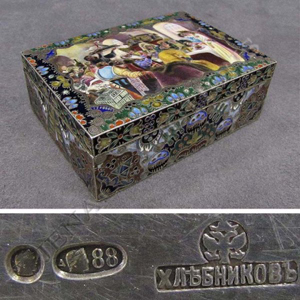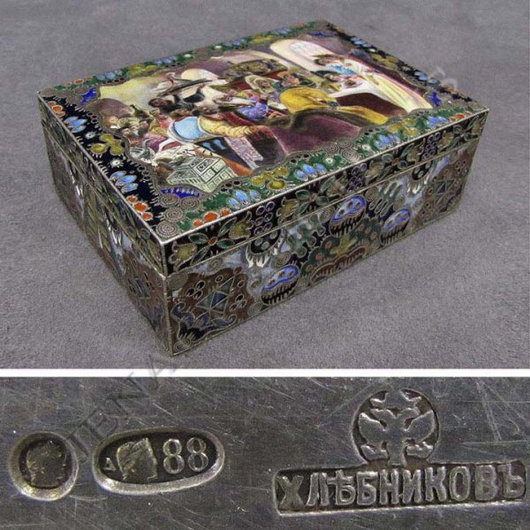
CHESTER, N.Y. (ACNI) – A surprising opinion by a New York appellate court, based on an obscure 19th-century statute, has upset the long-held practice of auctioneers keeping the identities of their consignors private.
William J. Jenack, co-owner of William J. Jenack Estate Appraisers & Auctioneers in Chester, N.Y., said if the ruling requiring auctioneers to reveal the identity of consignors stands, it will have a far-ranging ramifications in the auction industry.
“If it is upheld – and we don’t believe it will – it will affect every auction in the country,” he said.
The problem began four years ago when a phone bidder refused to pay for a rare and valuable item he won at a Jenack auction.
Jenack listed what was described as a “fine Russian silver/enamel covered box with gilt interior … signed I.P. Khlebnikov, 19th century. Height 1 1/2 inches; top 2 1/2 inches x 3 5/8 inches” in an auction on Sept. 21, 2008. While the small box had a $4,000-$6,000 estimate, specialists recognized it as the work of master silversmith Ivan Petrovich Khlebnikov and bid accordingly.
Albert Rabizadeh of New Hyde Park, N.Y., a dealer in imperial Russian works of art, won the box with a bid of $407,500 ($460,000 including the buyer’s premium). However, Rabizadeh failed to pay.
Jenack sued Rabidzadeh and a lower court ruled in favor of the auctioneer. When Rabizadeh appealed the judgment was upheld.
Rabizadeh was ordered to pay, but the amount was to be determined by what the box brought when Jenack resold it. As is often the case when items are resold after the original buyer walks away, an item brings significantly less. In this instance the box resold for $109,250. Jenack sought to recover the difference from Rabizadeh, who appealed to the Supreme Court of the State of New York, Appellate Division.
The opinion rendered Sept. 19 by that court said that “While it may be true that auction houses commonly withhold the names of consignors … this Court is governed not by the practice in the trade, but by the relevant statute … .”
The “relevant statute” cited by the justices is Section 5-701(a)(6) of New York’s General Obligations Law, which describes the components of enforceable auction agreements. One of the components stipulates that the name of the seller must be included on a document given to the buyer at the point of sale.
An invoice Jenack had sent to Rabizadeh did not reveal the name of the consignor; that person was identified only as no. 428.
The court decision was specific in stating that a number placed on the document cannot constitute the identity of the consignor.
Jenack said his attorney will appeal the decision to the New York Court of Appeals, the highest court in the state. The Court of Appeals consists of a chief judge and six associate judges appointed by the governor to 14-year terms.
It is possible the New York Court of Appeals will choose not to hear the case and the decision by the lower court will stand.
“We see enough attorneys in this business who tell us that this decision has holes in it,” said Jenack. “The presumption is we will be able to get this overturned. … (The decision) simply does not address the nature of business in the 21st century.”
Jenack said that Christie’s will join his company in the appeal and hopes that other auctioneers will as well.
He said that William J. Jenack Estate Appraisers & Auctioneers will not change their policy of keeping the identities of consignors confidential, saying that it is a practice auctioneers have “used for hundreds of years.”
While the identities of consignors are often publicized for “vanity purposes” to tout an auction, many consignors wish to remain anonymous for any number of reasons.
As for the whereabouts of the Russian box, Jenack said that when it was resold, its purchaser happened to be from the same town and used the same bank as Rabizadeh, leading him to suspect it was bought by a straw bidder and ended up in Rabizadeh’s hands.
# # #
Copyright 2012 Auction Central News International. All rights reserved. This material may not be published, broadcast, rewritten, or redistributed.
ADDITIONAL IMAGE OF NOTE


